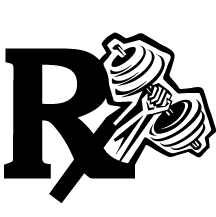Osteopathy
Osteopathy at High Octane Therapy offers a comprehensive, whole-body approach to health and wellness. Our manual osteopath therapists work to balance both the physical and emotional aspects of your body using gentle, non-invasive techniques that promote natural healing and optimal function.
What is Osteopathy?
Osteopathy is a form of manual therapy founded on the principle that all body systems are interconnected and must function together harmoniously for optimal health. This includes:
- Circulatory system: Blood vessels that transport oxygen and nutrients
- Nervous system: Brain, spinal cord, and nerves that coordinate body functions
- Muscular system: Muscles that enable movement and stability
- Skeletal system: Bones and joints that provide structure
- Fascial system: Connective tissue that surrounds and supports all structures
Unlike approaches that focus exclusively on isolated symptoms, osteopathic practitioners examine how these systems interact and influence one another. For example, restricted movement in one area of the body can create compensatory patterns elsewhere, leading to pain or dysfunction that may seem unrelated to the original restriction.
Osteopathy recognizes that the body possesses inherent self-healing mechanisms that can be impeded by structural imbalances, tension patterns, or restrictions in tissue mobility. By identifying and addressing these barriers, osteopathic treatment helps restore the body’s natural ability to maintain health.
How Osteopathic Treatment Works
Osteopathic treatment at High Octane Therapy begins with a thorough assessment to identify areas of restriction, tension, or dysfunction throughout your body. Our practitioners evaluate not just the site of your symptoms, but also the related structures that may be contributing to your condition.
During treatment, our osteopathic therapists use their highly trained sense of touch (palpation) to detect subtle changes in tissue quality, temperature, and mobility. This allows them to identify specific areas requiring attention, even when these areas may not be obviously related to your primary complaint.
Our practitioners then apply precise, gentle techniques that may include:
- Myofascial release: Gentle, sustained pressure to release restrictions in the fascia (connective tissue) that can cause pain and limit movement. This technique addresses the extensive network of tissue that surrounds muscles, bones, nerves, and organs.
- Joint mobilization: Careful movement of joints through their natural range of motion to improve mobility and decrease pain. Unlike forceful manipulations, these techniques use gentle pressure to encourage joints to move more freely.
- Muscular energy techniques: Guided contractions and relaxations that help reset muscle tension and improve function. These techniques often involve your active participation as you provide gentle resistance against the practitioner’s direction.
- Craniosacral therapy: Light touch techniques focused on the skull, spine, and sacrum to influence the flow of cerebrospinal fluid and release restrictions that may affect central nervous system function.
- Visceral manipulation: Gentle mobilization of internal organs and their connective tissue attachments to improve their function and relationship with surrounding structures.
- Postural re-education: Guidance on how to maintain better alignment during daily activities to prevent the recurrence of problems.
These techniques work in concert to enhance circulation, decrease inflammation, reduce nerve irritation, and restore normal tissue mobility throughout your body. The integrated approach helps address not just localized symptoms, but the patterns of tension or restriction that may be contributing to your condition.
The Benefits of Osteopathic Care
Regular osteopathic treatment offers numerous benefits due to its whole-body approach:
- Pain Relief: Eases muscle tension and addresses musculoskeletal discomfort by treating both the symptomatic area and related structures that may be contributing to pain
- Improved Mobility: Enhances joint function and range of motion by addressing restrictions in both the joints themselves and surrounding soft tissues
- Systemic Support: May help with conditions beyond the musculoskeletal system, including:
- Digestive issues such as bloating, constipation, or reflux
- Respiratory concerns including restricted breathing patterns
- Headaches and migraines related to tension or postural factors
- Temporomandibular joint (TMJ) dysfunction
- Stress Reduction: Promotes relaxation by calming the nervous system and may help address sleep disturbances and anxiety-related physical symptoms
- Preventative Care: Identifies and addresses subtle imbalances before they develop into painful conditions, supporting long-term health maintenance
Osteopathy is particularly effective for addressing conditions that have developed gradually over time or that haven’t responded well to more targeted approaches. Its gentle nature also makes it suitable for patients of all ages, from infants to seniors.
Ready to Experience Osteopathic Care?
Book your initial osteopathic assessment today and discover how this comprehensive approach to health can support your body’s natural healing processes and help you achieve better overall function and comfort.
Meet our Manual Osteopathic Therapists

Daniel Smikle
Manual Osteopathic Therapist

Omar Ahmadzai
Registered Massage Therapist , Manual Osteopathic Therapist
Not sure who is the right Manual Osteopath for you?
Tell us more about yourself and why you’re goals are and we will help you find the right therapist for you!
